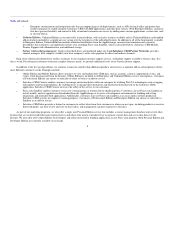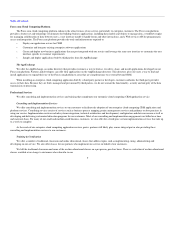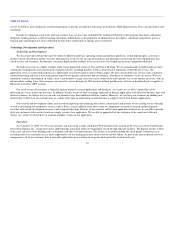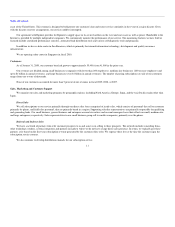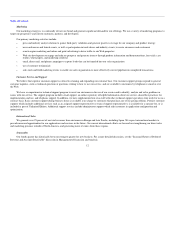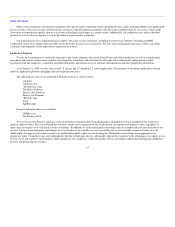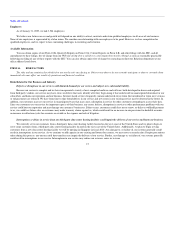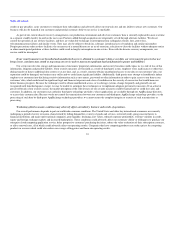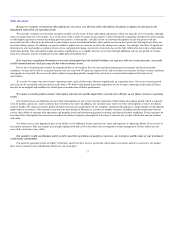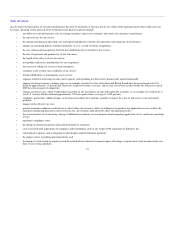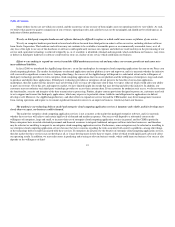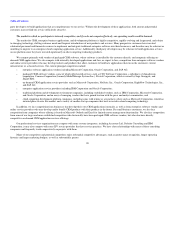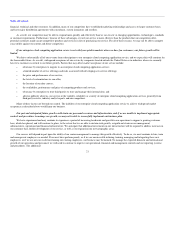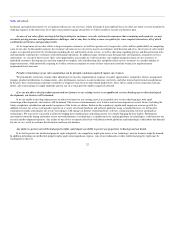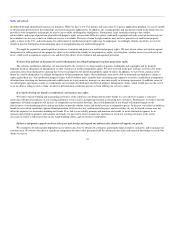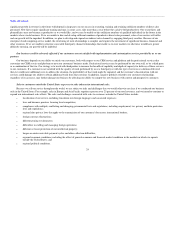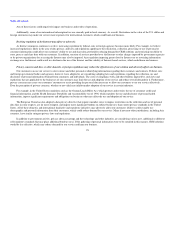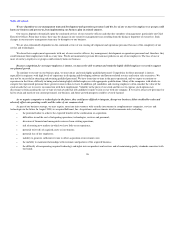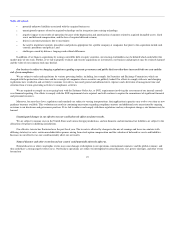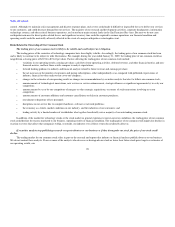Salesforce.com 2008 Annual Report Download - page 21
Download and view the complete annual report
Please find page 21 of the 2008 Salesforce.com annual report below. You can navigate through the pages in the report by either clicking on the pages listed below, or by using the keyword search tool below to find specific information within the annual report.
Table of Contents
may be based on expectations of our future performance that may be unrealistic or that may not be met. Some of the important factors that could cause our
revenues, operating results and cash flows to fluctuate from quarter to quarter include:
• our ability to retain and increase sales to existing customers, attract new customers and satisfy our customers' requirements;
• the renewal rates for our service;
• the amount and timing of operating costs and capital expenditures related to the operations and expansion of our business;
• changes in our pricing policies whether initiated by us or as a result of intense competition;
• the cost, timing and management effort for the introduction of new features to our service;
• the rate of expansion and productivity of our sales force;
• the length of the sales cycle for our service;
• new product and service introductions by our competitors;
• our success in selling our service to large enterprises;
• variations in the revenue mix of editions of our service;
• technical difficulties or interruptions in our service;
• expenses related to increasing our data center capacity and expanding our data centers domestically and internationally;
• changes in foreign currency exchange rates (as an example, recently the value of the Euro and British Pound have decreased against the U.S.
dollar by approximately 13 percent and 28 percent, respectively from a year ago, and as such, our revenue results outside the Americas in fiscal
2009 have been negatively impacted);
• changes in interest rates, which would impact our return on our investments in cash and marketable securities (as an example, the yield on the 2
year U.S. treasury bill has declined approximately 120 basis points from a year ago to 1.005 percent);
• conditions, particularly sudden changes, in the financial markets have and may continue to impact the value of and access to our investment
portfolio;
• changes in the effective tax rates;
• general economic conditions could adversely affect either our customers' ability or willingness to purchase our application service or delay the
customers' purchasing decision or affect renewal rates, all of which could adversely affect our operating results;
• the seasonal nature of our invoicing, timing of additional investments in our enterprise cloud computing application service and in our consulting
service;
• regulatory compliance costs;
• the timing of customer payments and payment defaults by customers;
• costs associated with acquisitions of companies and technologies, such as our August 2008 acquisition of InStranet, Inc.;
• extraordinary expenses such as litigation or other dispute-related settlement payments;
• the impact of new accounting pronouncements; and
• the timing of stock awards to employees and the related adverse financial statement impact of having to expense those stock awards ratably over
their 4 year vesting schedules.
18


